General placement conventions for key signatures
Dorico automatically follows conventions for the placement and appearance of key signatures, such as showing accidentals in the accepted circle of fifths order and positioning key signatures between clefs and time signatures.
The order in which accidentals are shown in key signatures is different for sharp keys and flat keys.
-
For sharps: F♯, C♯, G♯, D♯, A♯, E♯, B♯
-
For flats: B♭, E♭, A♭, D♭, G♭, C♭, F♭
Accidentals are arranged automatically in these orders in Dorico for all standard Western key signatures. There is an accepted pattern for the placement of accidentals in a key signature, so that they fit inside the staff according to the current clef. The pattern of accidentals is the same in all clefs, apart from the tenor clef, which requires sharp key signatures to follow a different, ascending pattern to ensure the accidentals fit on the staff.
|
Clef |
Arrangement of sharps |
Arrangement of flats |
|---|---|---|
|
Treble |
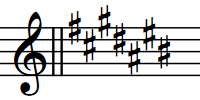
|
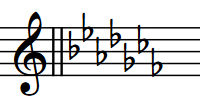
|
|
Bass |
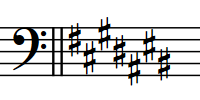
|
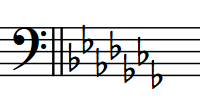
|
|
Alto |
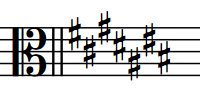
|
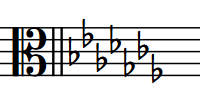
|
|
Tenor |
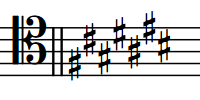
|
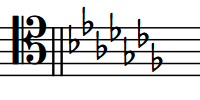
|
For custom, non-standard key signatures, you can determine the order in which accidentals appear in the Edit Custom Key Signature dialog.
Key signatures are shown at the start of a piece and at the start of subsequent movements, even if the music carries straight on and in the same key. They are positioned between clefs and time signatures. Unlike time signatures, key signatures appear at the start of every system in full score and part layouts, even if the key signature has not changed. They are shown on every staff that requires the key signature, but are not shown on staves for unpitched instruments.

Figure: The correct position for key signatures is between clefs and time signatures.
If a key signature change occurs during a piece or movement, it should be placed immediately after a barline. It is customary to have a double barline where a key signature change takes place, which is the default setting in Dorico. However, you can change the default barline shown at key signature changes.

Figure: Examples of key signatures positioned after double barlines
A key signature applies until the end of a movement, the end of a piece, or until a key signature change if one occurs before the end of a movement or the end of a piece.